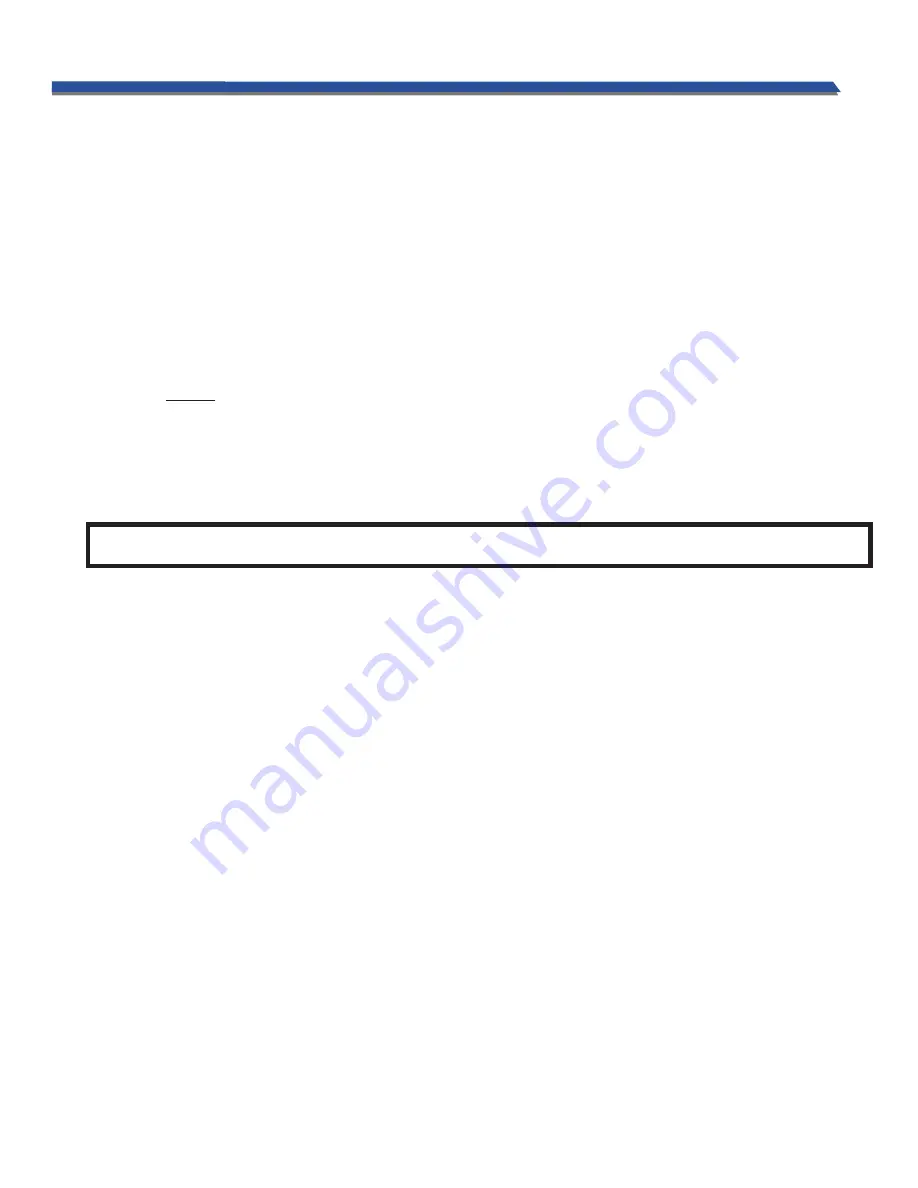
Page # 21
877 1st Ave. N.W. | Sioux Center, IA 51250 | Toll Free: 1.866.722.1488 | siouxautomation.com
OPERATION
REPLACEMENT PARTS
READ complete manual CAREFULLY
BEFORE attempting operation.
877 1st Ave. N.W. | Sioux Center, IA 51250 | Toll Free: 1.866.722.1488 | siouxautomation.com
OPERATION
REPLACEMENT PARTS
READ complete manual CAREFULLY
BEFORE attempting operation.
SAC- HYDS25100RV3
LHA BRAND-TM-25-100-RV5
FORCE AMERICA-TFS122003
2. Remove the drain plug and allow the oil to drain.
3. Dispose of the used oil in an evironmentally safe manner.
4.
Remove and inspect the Reservoir Suction Strainers:
a. Disconnect the suction lines (a.k.a. supply line) from the shutoff valves.
b. Remove any further fittings to permit access to the suction strainers.
c. Remove the suction strainers by turning the large hexagonal flange on the lower left hand side of the unit
counterclockwise until it is free from the reservoir.
d. Thoroughly inspect the suction strainers for foreigh matter and/or damage.
e. If the suction strainers are undamaged, clean the suction strainers with a degreasing solution and a
brush. If there are any signs of damage to the suction strainers, replace them with new strainers. See
the section that follows for replacement information on the suction strainer.
f. Reinstall the suction strainer, suction line, and necessary fittings. Use an appropriate pipe thread seal
on all threaded connections.
5. Reinstall the drain plug. Use an appropriate pipe thread sealant on the threads of the drain plug.
6. Remove and inspect the hydrostatic oil reservoir breather/filler cap.
Follow the breather/filler cap
service and maintenance instructions following this section.
7. Add new
filtered
hydraulic oil of the appropriate specification to the hydrostatic oil reservior. Add the oil slowly
and carefully to avoid spillage. Continue filling the reservoir until the oil level gauge on the side of the reservoir
indicates that it is full. All oil should be filtered through a 10 micron filter before adding to the reservoir.
8. Turn the suction line shutoff valves to the closed position.
9. Loosen the suction hose fittings at the charge pump inlet and at the auxiliary pump inlet.
10. Allow fluid to run out of these connections into a suitable container. Have an assistant open and close
the suction line shutoff valves to control the flow of hydraulic oil.
Keep the system clean!
If any hose fittings are removed at any time on the hydrostatic system, it is extremely import-
ant that the connection area is cleaned prior to hose removal to keep foreign material out of the system. Hose ends,
pump ports, and fittings should be immediately capped upon removal of any hose or fitting to keep contaminants out
of the hydrostatic system.
Do not use paper towels or rags to plug hoses or ports. Lint can cause severe damage
to pumps and motors.
Failure to keep out contaminants can result in system failure.
Each motor on the mixer (augers and reel) is equipped with a pressure gauge.
Under normal full load conditions,
the pressure of each circuit while running will be in the 3000 to 4000 psi range. Lighter fluffy rations will be less, while
heavier or denser rations will be higher. AT NO TIME SHOULD THE SYSTEM BE RUNNING OVER 5000 PSI!
There is a pressure gauge mounted on the hydrostatic pumps to monitor charge pressure.
While the pumps are
turning the charge pressure will be 150-250 psi. Periodically check the charge pressure to ensure that the system is
funtioning properly. Charge pressure lower than 100 psi could cause severe damage to the pumps and motors, and
may be an indication of excessive internal leakage in the pump or motor, a restriction in the inlet line to the pump, or a
plugged filter.
Monitor the hydraulic system oil temperature on a regular basis while operating.
The oil tempurature should
never exceed 170 degrees F. If the oil exceeds this temperature it will begin to break down. Damage to the pumps and
motors may occur and also shorten their useful life.
Important:
This step is to be done to force out and minimize air in the hydraullic system. Excessive amounts of air
in the hydraulic system can cause instability and cavitation of the hydraulic system.
11. Tighten all connections undone in step 9.
12.
Ensure that both the reservoir suction line shutoff valves and the reservoir inlet line shutoff valves
(if equipped) are completely open.
13. Add additional hydraulic oil to the reservoir to maintain appropriate oil level as indicated on the oil level
gauge.
14. Following the startup procedures in the chassis Operators Manual, start the truck engine and while running at an
idle allow the pumps to operate neutral for 5 miutes to allow the system to fill with oil and purge any air in the
system.
15. Engage the pumps after 5 minutes. Check for hydraulic leaks and verify proper operation of the machine.
Reservoir Suction Strainer Specification
The replacement suction strainer for the hydraulic system is as follows:
HYDRAULIC FILTRATION





































